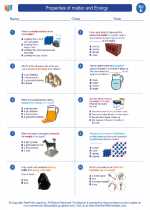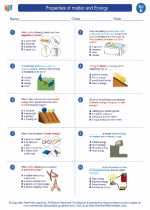Tissues
In the study of biology, tissues are groups of similar cells that work together to perform a specific function. There are four main types of tissues in the human body: epithelial, connective, muscle, and nervous tissue.
Epithelial Tissue
Epithelial tissue covers the body surface and lines internal organs and cavities. It serves as a protective barrier and helps in the absorption and secretion of substances. There are different types of epithelial tissues such as squamous, cuboidal, and columnar.
Connective Tissue
Connective tissue provides support and connects different structures in the body. It includes bone, cartilage, blood, and adipose tissue. Connective tissue also plays a role in protecting organs and providing insulation.
Muscle Tissue
Muscle tissue is responsible for movement and is categorized into three types: skeletal, smooth, and cardiac. Skeletal muscles are attached to bones and help in voluntary movements, while smooth and cardiac muscles are found in internal organs and are responsible for involuntary movements.
Nervous Tissue
Nervous tissue consists of neurons and supporting cells. It forms the brain, spinal cord, and nerves, and is involved in transmitting electrical signals and coordinating bodily functions.
Functions of Tissues
Each type of tissue has specific functions, but they also work together to support the overall function of the body. For example, epithelial tissue protects underlying structures, connective tissue provides support, muscle tissue enables movement, and nervous tissue coordinates body activities.
Study Guide
- Define tissues and explain their role in the human body.
- List and describe the four main types of tissues in the human body.
- Compare and contrast the functions of epithelial, connective, muscle, and nervous tissue.
- Give examples of where each type of tissue can be found in the body.
- Discuss how tissues work together to support overall body function.
Understanding the different types and functions of tissues is essential for comprehending the structure and function of the human body. It provides a foundation for further studies in biology and anatomy.
[Tissues] Related Worksheets and Study Guides:
.◂Science Worksheets and Study Guides Fifth Grade. Properties of matter and Energy

 Worksheet/Answer key
Worksheet/Answer key
 Worksheet/Answer key
Worksheet/Answer key
 Worksheet/Answer key
Worksheet/Answer key
 Vocabulary/Answer key
Vocabulary/Answer key
 Vocabulary/Answer key
Vocabulary/Answer key
